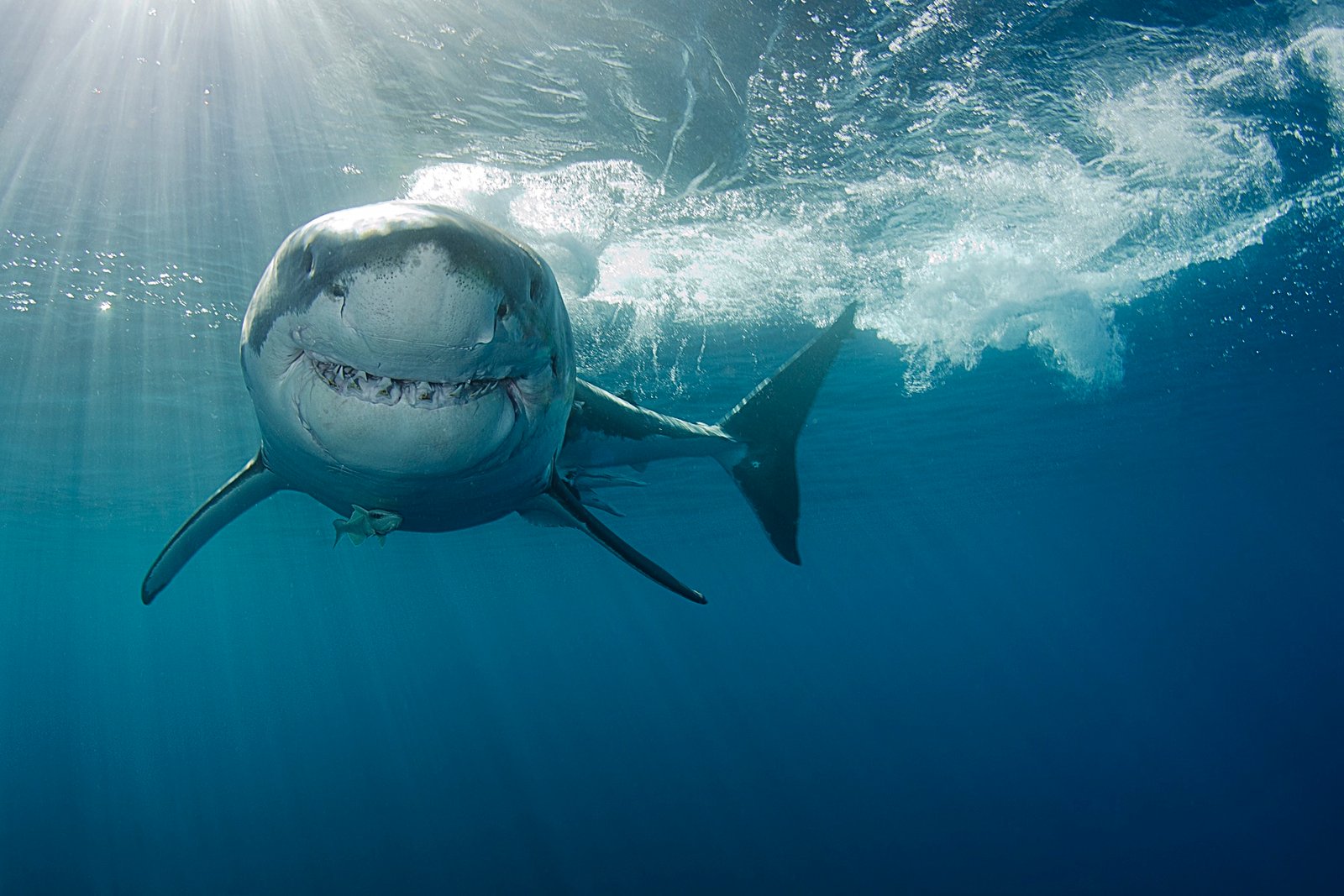In the Know About Sharks in the Gulf of Mexico: Attacks, Species, Photos & More!
Famously known as ‘America’s Third Coastline”, the Gulf of Mexico is extremely rich in marine life due to the warmer waters in the region. It has a very similar climate and environment to that of the Caribbean islands which are located just to its west. As one would expect with a coastal area rich in marine life and beautifully warm waters; there will be sharks – and plenty of them.
There are actually 32 different species of sharks in the Gulf of Mexico. Thankfully, the vast majority of them pose no real threat to humans.
If you’re looking to visit the Gulf, whether it be in Mexico, Cuba or the US, knowing what types of sharks you might encounter while enjoying some fun coastal activities is definitely something you should know about. After all, whether you’re in Cuba or Mexico, you’re more than likely to meet the same type of sharks as they don’t need a passport to enter other territories’ waters!
Here we show you the common types of sharks in the Gulf of Mexico. We also share with you some bite-sized statistics around attacks as well as safety info and more.

Sharks in the Gulf of Mexico: A Quick Overview
As we said above, there are over 30 different shark species that are common to the Gulf of Mexico area. And as you may expect, many of them are endemic to the entire east North American coastline.
If you are wondering whether sharks in general are a danger to humans, the honest answer is no. However, that doesn’t mean they are not dangerous creatures though.
There is a distinct difference. Since recording began in the United States, there have been 925 unprovoked shark attacks, of which 98% of them have not been fatal. An unprovoked attack is when a shark attacks you for no apparent reason. A provoked attack would be if you were shark fishing, swimming up to the shark to touch it, and so on.
Below, we will show you the most common sharks in the Gulf of Mexico that you could encounter, and whether or not they’re dangerous to humans. Unfortunately some of these animals are now endangered.
Then we detail the three most dangerous sharks in the Gulf of Mexico, and explain why they should be avoided at all costs. (Related: Sharks in Cancun and the Riviera Maya).
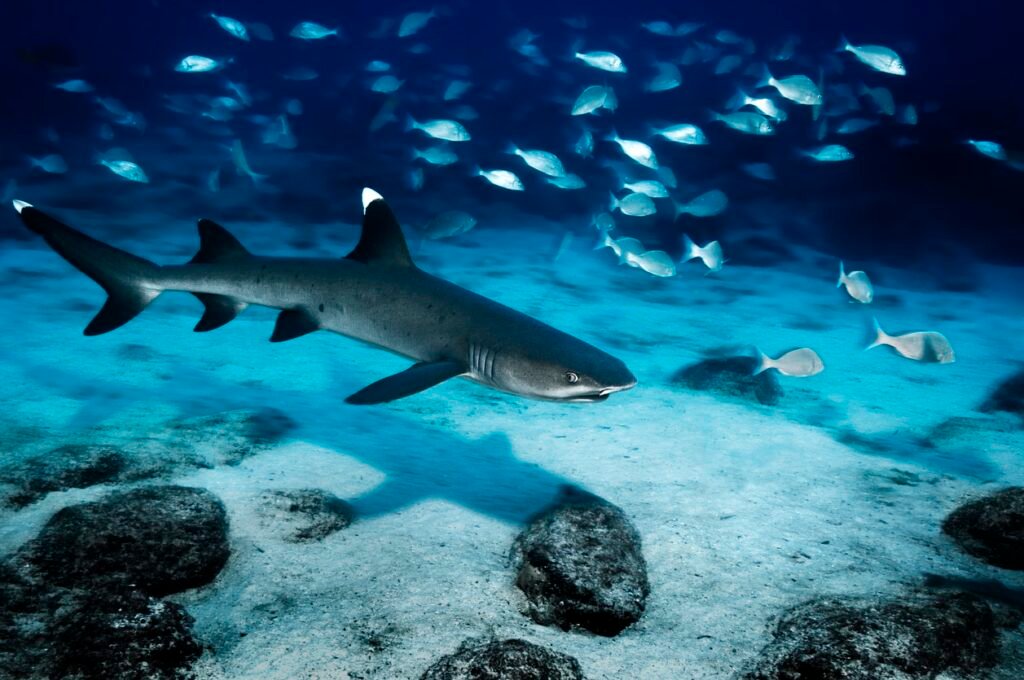
Common Sharks in the Gulf of Mexico That You Could Encounter
1. Caribbean Sharpnose Shark
The Caribbean Sharpnose shark is a relatively small shark that is very plentiful in the Gulf area. They reach a maximum length of just over 1.5m and weigh a maximum of 7.5 kg and pose absolutely no threat to humans whatsoever.
They are often caught in fishing nets as they rarely go below 100m in depth, and are also sometimes caught to be eaten by humans or dried and ground and processed into fishmeal. Unfortunately they are considered a vulnerable species. Their main prey are sea snails and shrimp.
2. Caribbean Reef Shark
This shark, as its name suggests, is found in the reefs around the entire Gulf region. They are considerably larger than their sharpnose relatives. It is quite common to see them reach lengths of 3m and weigh over 68kg. They are a dark grey color with a blunt nose tip.
Due to their size, they are considered as a potentially dangerous species towards humans as they can be quite territorial about the reefs they visit.
They are some of the bigger predators in the reef areas of the Gulf. So, if you fancy scuba diving in those regions, just be aware of their presence and be sure to give them space.
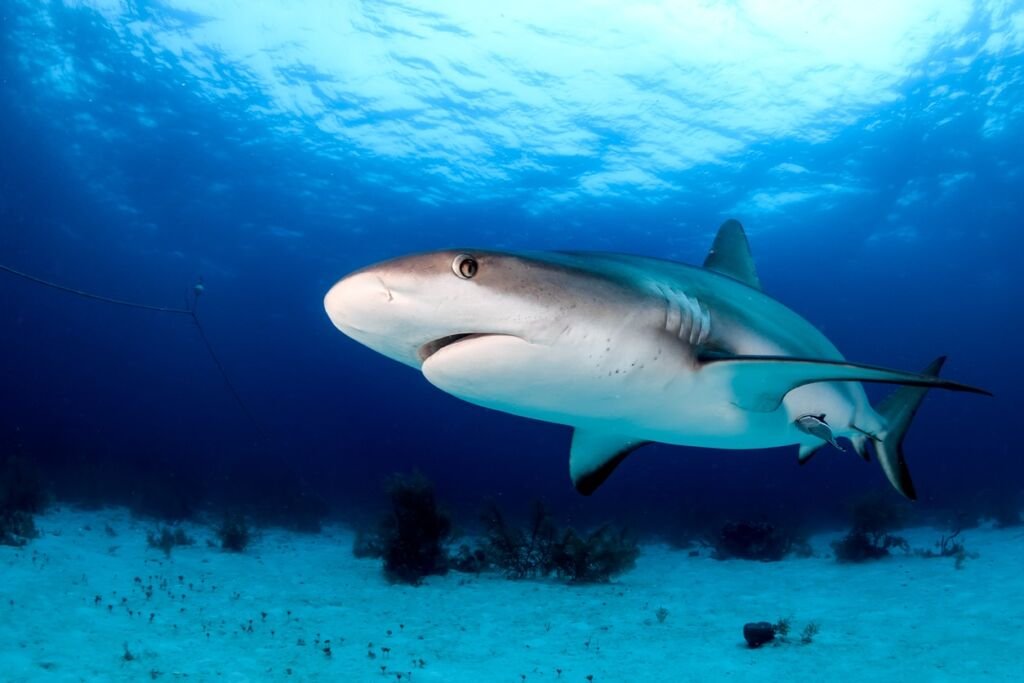
3. Galapagos Shark
This shark species is actually prevalent all over the globe, despite its name. It is a shark that prefers to dwell within shallow reef-like regions, so they do encounter humans.
They can grow up to 3.8m long and come in at a heavy 89 kg. That places them near the top of the larger predators in the reef areas.
They have been known to be aggressive towards humans and may attack without warning. But the general consensus is that if they are seen early enough, they can be avoided without any issues.
There has only ever been two recorded unprovoked attacks by this shark worldwide, one of which was fatal.
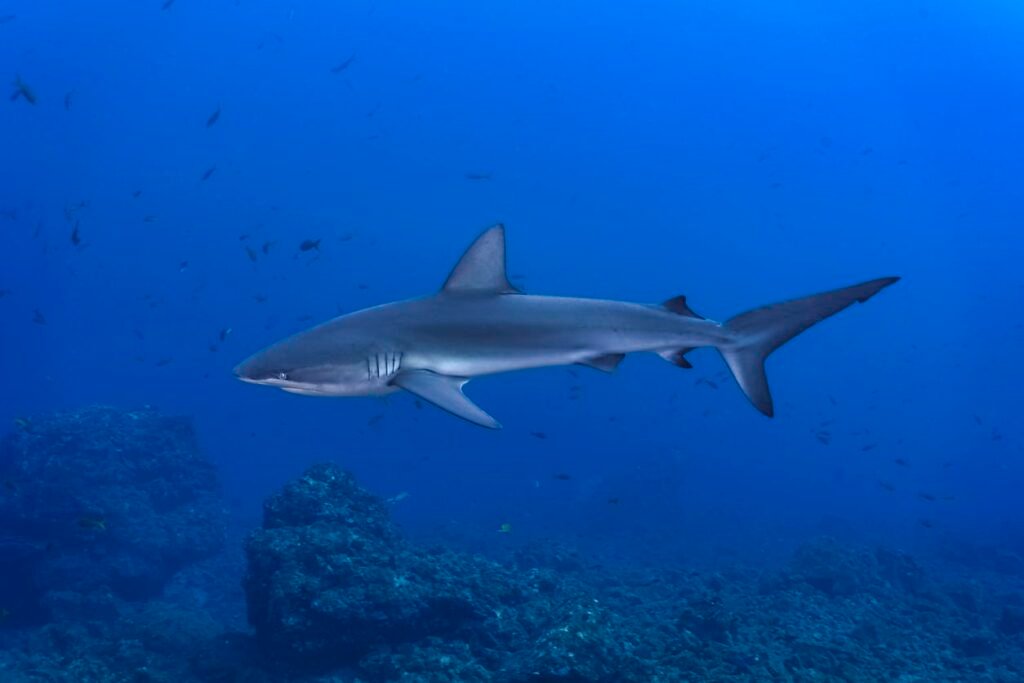
4. Sand Tiger Shark
The Sand Tiger Shark is also quite a large predator that inhabits the waters of the Gulf of Mexico. They have been known to patrol the breakers on the shoreline – so they can often be found in very shallow water. They grow to be around 3.3m on average and have a striped and light brown color on their bodies.
Sand Tiger Sharks have been known to attack humans, but almost exclusively when the person has been spearfishing and caught something. So, experts believe that the attacks are unprovoked, but just a natural reaction to seeing prey on stick. There have been 36 unprovoked attacks on humans, but none were fatal.
In general, they are not interested in humans at all and won’t attack when around them. If you do plan to do any spearfishing, it is generally a good idea to keep an eye on your surroundings for any sharks – as they might enjoy the fish you catch as well!
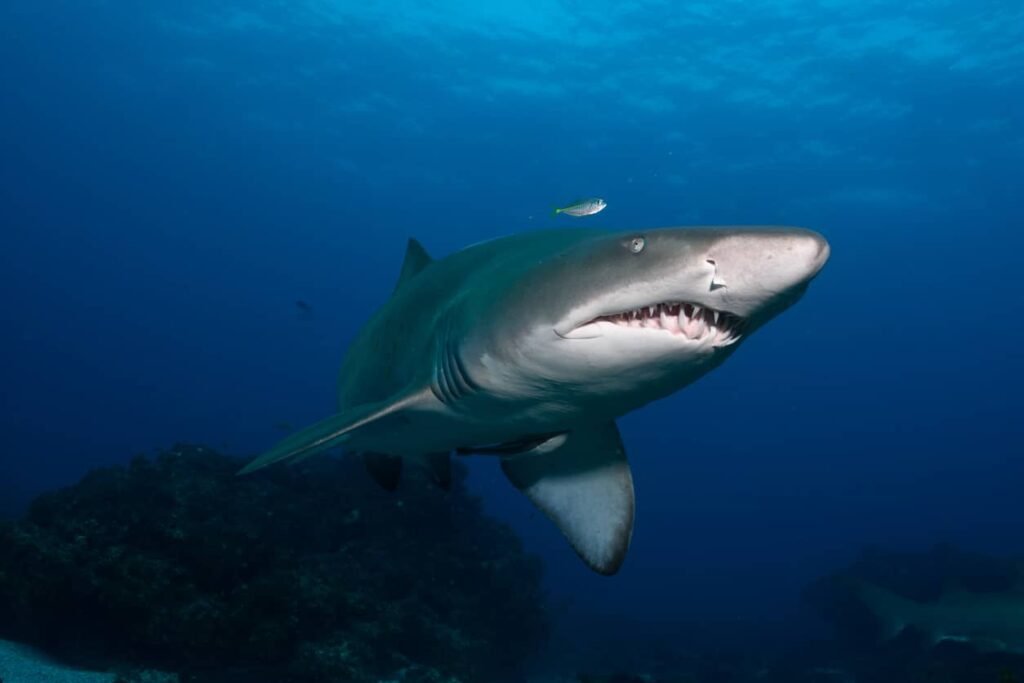
5. Longfin Mako
The Longfin Mako Shark can be found all around the world and is not specific to the Gulf of Mexico exclusively. They generally come nearer to land when it is time for them to give birth to their pups. They can reach lengths of over 4m – making them very large predators.
Longfin Mako Sharks can be dangerous to humans and there are some attacks from them on record. But normally they don’t bother any humans when coming into contact with them.
They are easily recognizable by their striking blue color on the top half of their bodies with a white underneath. They are caught for their fins in some places in the world, but thankfully they are protected in the Gulf region.
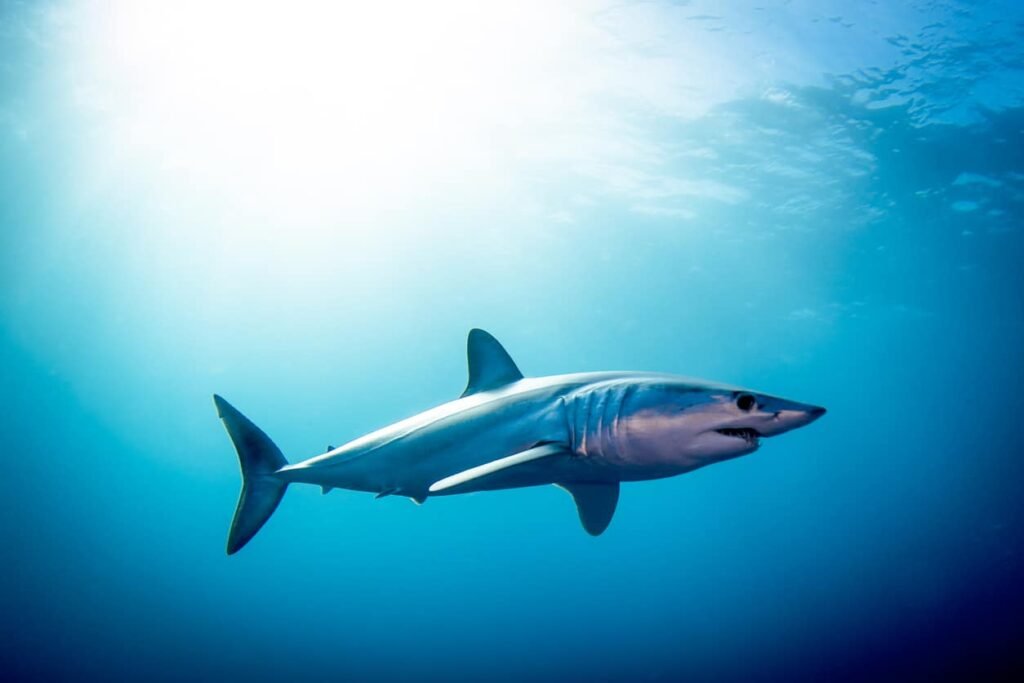
6. Finetooth Shark
This particular shark species is mainly found in the Gulf area and is hardly ever found on its own. This is mainly due to the fact that they always travel in large schools because of their small size. They only reach lengths of 1.5m.
They are a very vulnerable species that depends on travelling in large schools to protect themselves from other sharks. Whilst they’ve not attacked anyone on record yet, but they are classified as aggressive when in very large schools.
7. Lemon Sharks
These sharks are particularly fond of mangrove areas, which can be found in the Gulf area. Considering how they can be found in such close coastal areas; they are considered very large as they tend to measure over 3m in length.
Lemon Sharks have been known to attack humans when coming into contact with them, though mostly the contact has not been fatal. They are a mud brown color with no distinct markings – meaning they can look like any other shark species. It is generally best to avoid these animals if possible.
There have only ever been 11 recorded attacks worldwide on humans by Lemon Sharks, and none have been fatal.
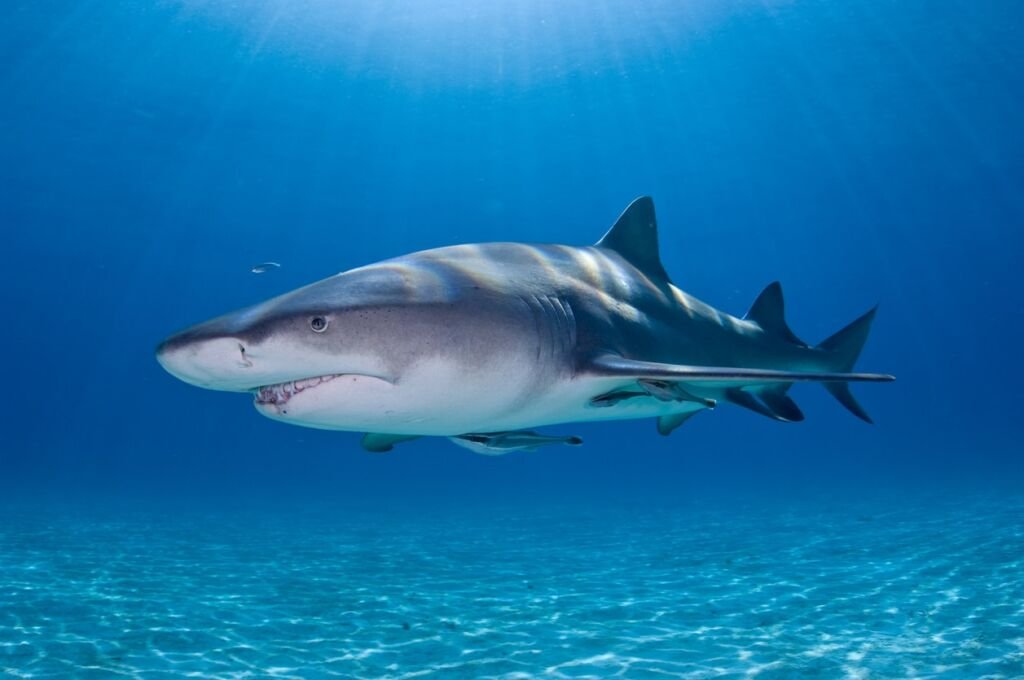
The Three Most Dangerous Species of Sharks in the Gulf of Mexico
1. Bull Shark
Bull Sharks have a somewhat unique ability to thrive in both freshwater and saltwater, and they’ve even been found swimming in lakes. But what’s concerning about the Bull Shark is that it’s one of the most aggressive sharks around and has been known to attack humans unprovoked.
A Bull Shark can grow to around 8 feet long and weigh up to 300 lbs. The females are slightly larger than the males.
Bull Sharks are extremely territorial, even towards humans. So if you enter its territory, you may be agitating the shark to the point of attacking you.
Worldwide the Bull Shark has attacked at least 121 humans unprovoked, which has resulted in 26 deaths.
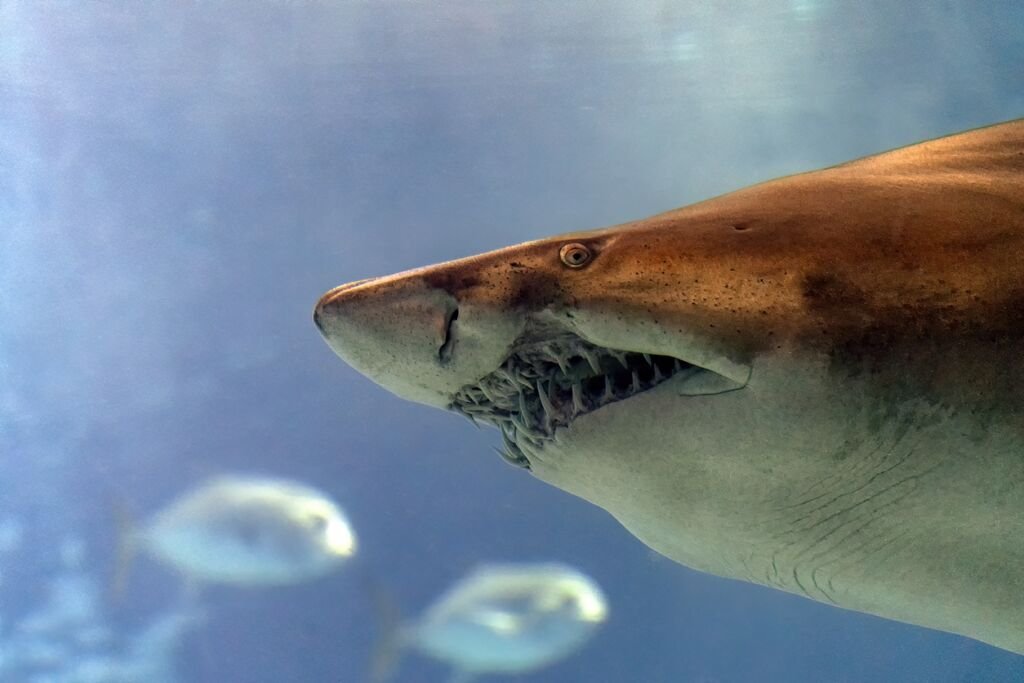
2. Tiger Shark
These Gulf of Mexico sharks are incredibly large and powerful creatures that are among the apex predators of the ocean. They can be found in most parts of the world, to which the Gulf of Mexico is no exception.
The mighty Tiger Shark is the second most likely shark that will attack humans when compared globally. They are extremely aggressive creatures that feed on anything in the ocean. This includes other sharks, humans, trash, seabirds and almost anything that they can find. They are curious creatures, just veracious and wanting to constantly feed.
It is best that you avoid any areas in which these predators can be found. It’s not advised at all to interact with them as the result may not be in your favor. They can reach a length of over 8m with a mass of up to 1400lb. These creatures are not to be trifled with!
Worldwide the Tiger Shark is responsible for at least 138 recorded unprovoked attacks and 36 fatalities. They are the second most dangerous shark in the world.
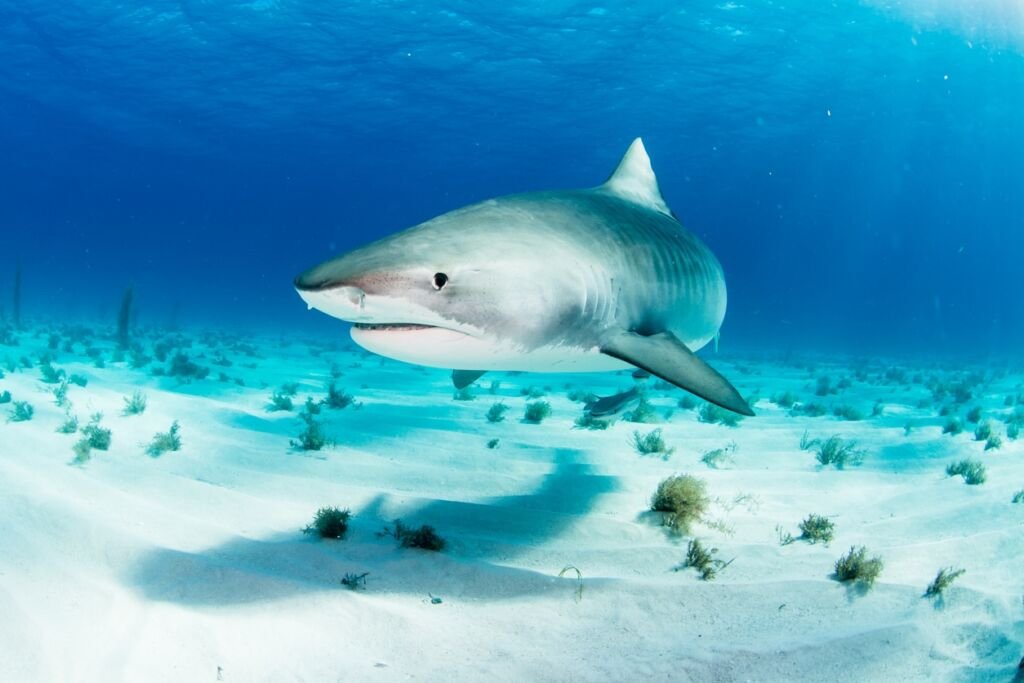
3. Great White Shark
This is truly the king of all predators in the ocean and Great White Sharks can be found in the Gulf. These sharks are considered the most dangerous shark in the world because they fear no creature. They are animals that have been known to consistently feed on whales – so they can take on creatures well above their size. They can reach lengths of over 8m with a very distinctive white bottom half from which they obtain their name.
Due to the fact that these creatures will eat anything if it moves, you should not be in the water with them – unless in a shark cage. But then again, be careful about your safety as the cage does need to be rather robust. If you see this magnificent creature in any water that you would like to swim or enjoy coastal activities in – find another spot.
The average Great White Shark is huge and weighs between 1500 pounds and 4000 pounds. Some can even weigh more than 5000 pounds. They’ve been implicated in more unprovoked attacks on humans than any other shark, with 354 attacks of which 57 were fatal.
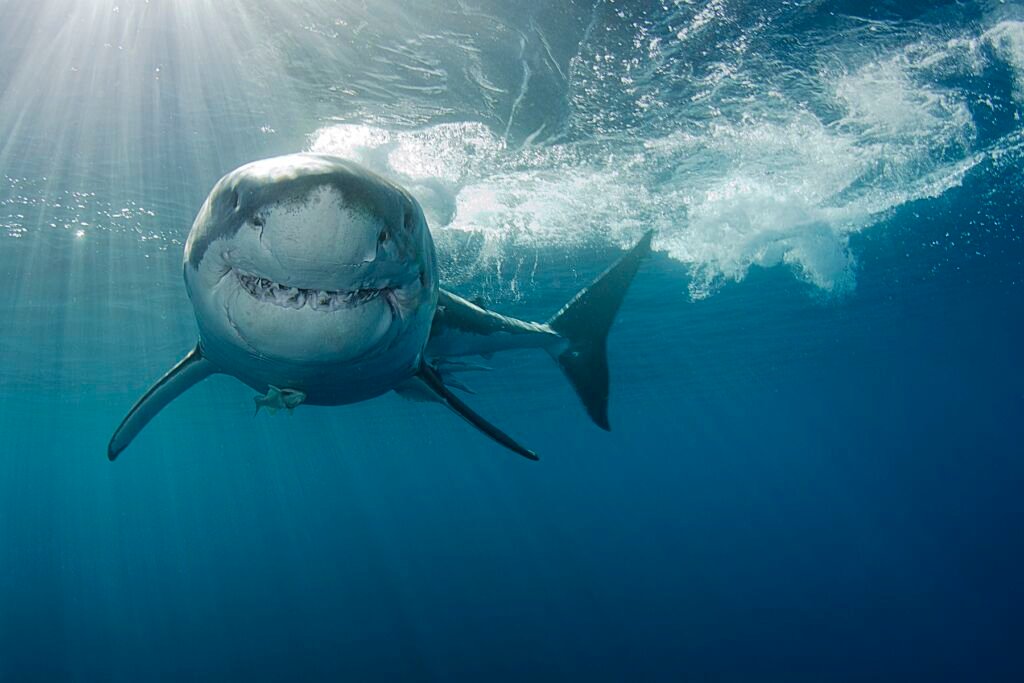
Guidelines on Shoreline Activities Relating to Sharks
Whether you are planning to spend your vacation on the beaches and shoreline, or in deeper waters, the Gulf of Mexico is a beautiful area with a lot of marine wildlife.
And as we have explained above, there are quite a few sharks to be aware of. Most of them should not bother you, should you not bother them of course.
They key thing is to be aware of your surroundings at all times. But there are some other guidelines that you should try stick when doing any sort of activity near the ocean:
Swimming & Surfing at the Beach
The beach is often the first place people want to go. And in the Gulf – who can blame them. It’s a fantastic region. If you decide that you would like to have a beach day, try to find out what beaches are safe to swim at as some beaches may have shark nets to allow people to swim safely.
If you’re keen on surfing, try and chat to some local enthusiasts about where the best and safest spots are. That way you can stay safe and also have a great time. Local knowledge is often best.
If you do go to more secluded spots, just be aware that sharks could come into contact with you there. If at all possible, try and stick to areas where there are safety procedures in place – you don’t want to come face to face with a Great White when surfing.
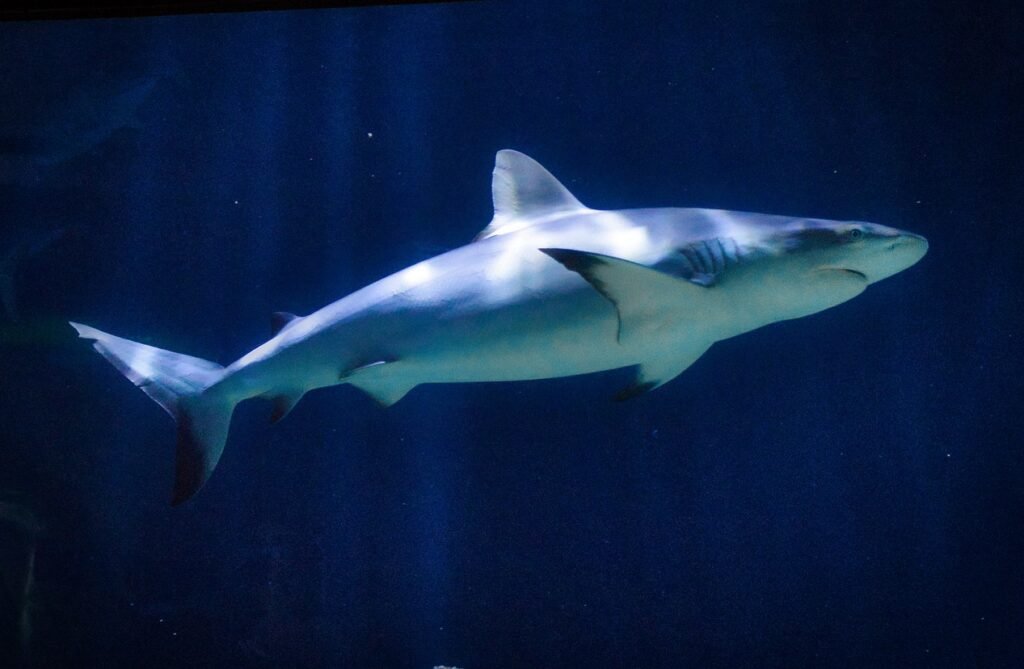
Fishing Activities
If you are a fishing enthusiast, you may be keen to try your hand at the local scene in the Gulf – and who could blame you? You could even be heading to the area to do some game fishing.
Our advice would be to ensure that you use licensed and professional charter services. Companies that have the proper equipment will have your safety at the top of their list. They know you want to have a good time and they want to leave with great memories. So when looking for someone to take you fishing – use a professional service!
Sharks in the Gulf of Mexico: Our Final Thoughts
The Gulf of Mexico is a beautiful area, regardless of which country you see it from. The marine life is vast and varied – and includes countless sharks. Your safety is in your own hands, be sure that you are well equipped to enjoy your visit to the region!


